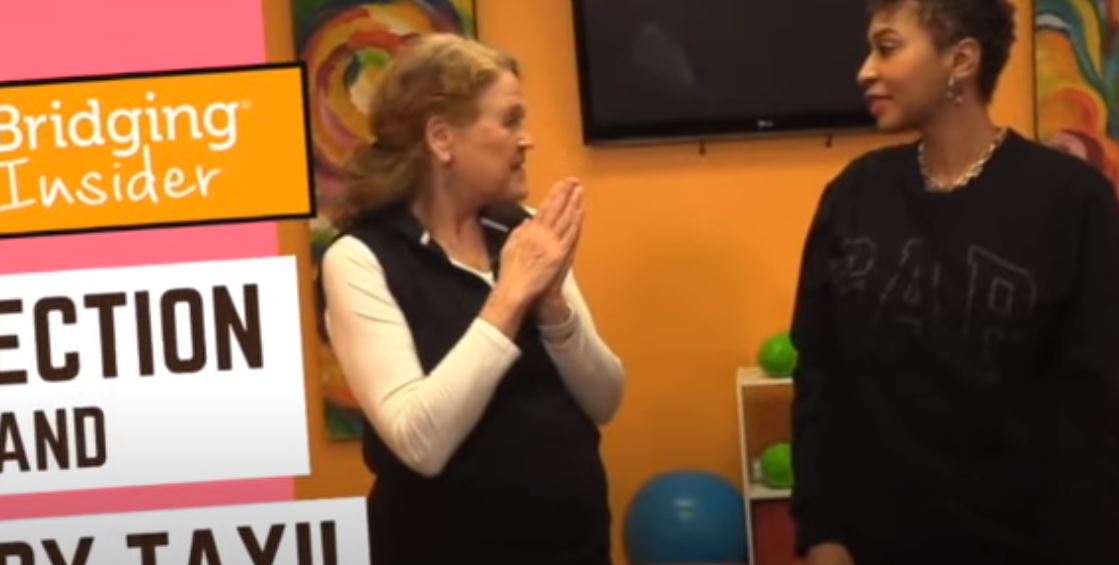Exercise Plans Side-tracked? Do Past Injuries Make Things Harder?
She wanted to get back to exercising for her health. How did Bridging® help?
In the latest Bridging Insider video, we meet Zakiya whose exercise routine has been side-lined while caring for her son who has special needs.
She’s had two key physical traumas over the years and she wants to make sure she is in a good place to begin working out again.
Zakiya’s disruptors:
Hit by taxi, she flew in the air, landing face down on her stomach, and a C-section birth of her child.
After the taxi event Zakiya didn’t feel quite right even though there was nothing broken or needing serious medical attention. However, the structural integrity of how her body functions as a whole, and as a series of parts really took a blow. This system-based view of movement and function takes a different perspective than the orthopedic experts who look at specific muscles, ligaments, and bones.
In addition to the taxi encounter, she also a C-section surgery. As we’ve discussed before, there are implications to how the abdominal muscles are traumatized by this procedure. A C-section can leave lasting effects on lower body movement and posture.
As you’ll see in the video, using Bridging we were able to assess the basics of how her body’s micromovements work and put specific core relationships back together. She felt less tension and more ease of movement when we finished.
At The Bridging® Institute, we find that movement disruptors accumulate over the years leaving your body less able to bounce back. Life can easily become a vicious circle of exercise, maintenance, and fatigue.
Why does an injury impact movement years later?
The incident of being hit by a taxi happened about 20 years ago. Why might that relate to her current concerns?
Our human bodies are a lot like an automobile body
I like to use the analogy of our bodies are similar to an automobile body. If your car sustains dents and dings over 10-15 years they accumulate and don’t go away on their own. But a little detailing and specific expertise will have it looking good again. For a more serious accident you will need special attention and tools to get your car working, and looking, like new.
Human bodies are similar. When injuries add up, or are major, they need special attention. First, it’s essential to figure out which ding or dent is really causing an issue. Second, guiding your muscles back to work together for easy and fluent movement gets your body back to normal. That is what the Bridging process does for you.
A disorganized body doesn’t always go back to original on its own
By following our unique problem-solving process, we are quickly able to hone in on the root cause of your stiffness or pain. By getting to the source of the body’s imbalances, we are able to maximize the improvements in movement and coordination for you.
Putting injured bodies back together
Often it takes only 2-3 sessions to reset the upset from an injury. You will be all set to get back into the workout routine that interests you without hurting yourself further!
Which movement disruptors are impacting your ability to stay active?
Our unique, engineering-based, problem-solving process looks at how each part of your body connects and transitions with the next part. Where there are glitches, we support and guide the movement, and add a subtle stretch to seal in the new muscle relationships.
Fill out our intake form and we’ll get back to you with insights on how Bridging® can help.

